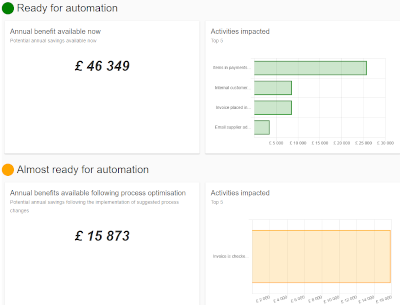The Number 1 Reason RPA Projects Fail
How to stop RPA failure? Up to 50% of RPA projects fail during or after the initial implementation according to a recent Ernst and Young’s report. Unsurprisingly for many, the main reason is that projects are IT led rather than by the business.
However this is not an IT problem, it’s a business problem. It is the business who has failed to engage with, or properly understand, the project and it is the business who has misaligned their strategy and processes.
Robotic Process Automation (RPA) is a technology with strategic implications. Absolutely IT must play a significant part in any implementation but to achieve a truly transformational change to your bottom line, profits and customer experience the business must be in the driving seat.
So, how does the business become, and stay, engaged in such an important initiative? How to stop RPA failure?
Business benefits
RPA, in its simplest form, takes on many manual and repetitive tasks currently performed by humans.
More sophisticated RPA implementations can start to pick up more value adding work, often between multiple systems, where humans are performing manual interface activities such as moving data from one system to another. This is especially true when augmented with Artificial Intelligence and Machine Learning.
Typically RPA should only be applied to parts of the process, significantly speeding it up and reducing errors. Very few full end-to-end processes are suitable for implementation of RPA.
Not investigating and entirely understanding your processes means potentially you are pushing the problem further along. The bottom line is that while RPA may have improved one part of the process, the rest continues to consume as much time and resources leading to little or no business benefit.
It is essential that the business leads the effort to understand the end-to-end business process. They must identify the parts most suitable for RPA and understand the impact on the rest of the process. Only this will ensure that a real and measurable improvement can be produced.
Business priorities
The old adage “when you have a hammer, every problem looks like a nail” is common when any new and disruptive technology comes along and RPA is no exception. Once you start to look at your business through the RPA lense you’ll quickly identify many potential opportunities.
The key is, as above, to try and identify the true business benefits. It doesn’t have to be time consuming. The days of long discovery and analysis phases are coming to an end with the advent of new software tools such as Skore’s Process Improvement platform. This capture and analysis of end-to-end processes takes a fraction of the time compared to traditional ways.
This means the business can quickly understand the potential business benefits across multiple processes allowing a comparison and prioritisation of opportunities.
Once benefits are understood in terms of time and cost savings they can be compared to strategic business priorities to ensure that your RPA initiatives are clearly aligned to your business strategy.

Support for IT
IT will play a critical role in the success of any project.
To support IT ensure they have the necessary budget to deliver the expected benefits. Essentially however, they must also have access to the business expertise to ensure they can build the right solution.
Any work carried out to understand the processes and quantify the benefits should include representatives from IT. This means they are engaged early and fully understand the context of what you are asking them to provide. It will go a long way to preventing unexpected problems cropping up later in the project or after going live.
Conclusion
RPA promises to transform many businesses with rapid deployment, speed of operation and quality of output. However applied in the wrong place with the wrong motives it can quickly turn into an expensive project with no tangible benefits.
Follow our tips on how to stop RPA failure:
- RPA projects should be led by the business to deliver tangible business benefits aligned with strategic priorities
- Processes need to be understood holistically and the impact on non-automated parts properly understood – investment in this stage is vital
- Keep IT engaged throughout to ensure everyone is fully aligned
Find out more about how Skore and how our analytics could help your business identify the right processes for automation. Skore’s software platform builds a prioritised portfolio of RPA opportunities based on robust ROI analysis. It was designed with a simple two shape system which means everyone in the organisation can understand and share processes.
Learn more about how Process Improvement can transform your business by accessing our resources here
Statistics taken from Ernst and Young’s recent report ‘Get Ready for Robots’ available here https://www.ey.com/Publication/vwLUAssets/Get_ready_for_robots/$FILE/ey-get-ready-for-robots.pdf
